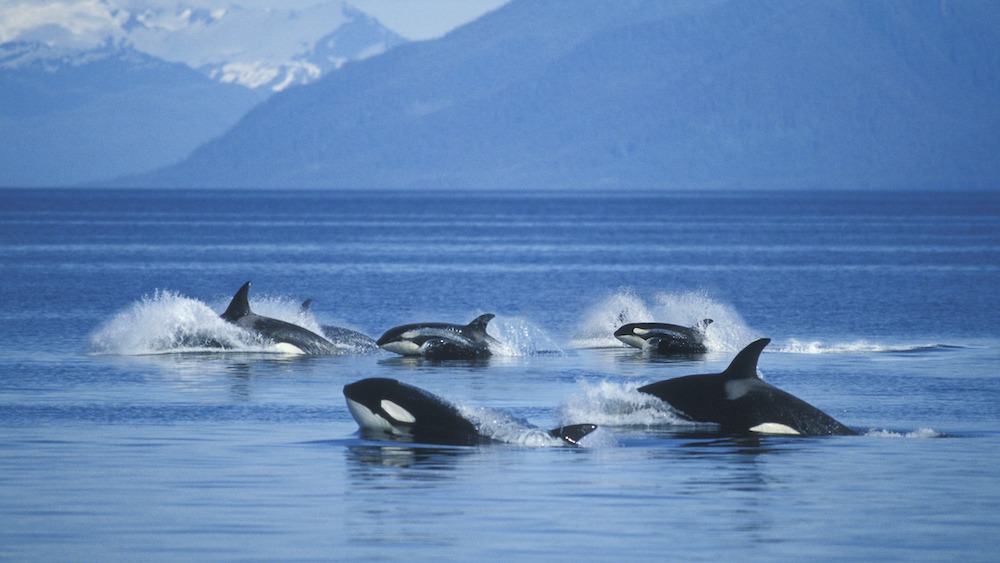Inbreeding may be causing orca population in the Pacific Northwest to crash
Inbreeding among an endangered population of orcas off the coasts of British Columbia, Washington and Oregon is a cause for concern.

Southern Resident killer whales, a small population of orcas living in the Pacific Ocean off the northwest coast of North America, are so isolated that they've taken to inbreeding, which has contributed to their decline, a new study finds.
While scientists have long suspected that inbreeding has been occurring within the group, it wasn't until researchers conducted genomic sequencing that they saw how dire the situation had become.
The international team of researchers found that the orca group they studied — which included 100 living and dead orcas (Orcinus orca), of which 73 are still alive — had "lower levels of genetic diversity" and "higher levels of inbreeding" when compared with other North Pacific populations, according to a study published March 20 in the journal Nature Ecology and Evolution.
One reason for this decline is the group's limited geographic range, which stretches between British Columbia and Oregon.
"They're a little more genetically isolated from other populations," study co-author Michael Ford, a research scientist with the National Oceanic and Atmospheric Administration's (NOAA) Northwest Fisheries Science Center in Seattle, told Live Science. "There's also less episodic interbreeding between [them and] other populations."
Studying the genetic makeup of the population "filled a major gap" in researchers' understanding of why this population of orcas "is failing to thrive," according to a NOAA statement.
Related: Orca appears to adopt (or abduct) a baby pilot whale
Get the world’s most fascinating discoveries delivered straight to your inbox.
"The sequencing revealed that several of the whales were the result of inbreeding between a parent and one of its children," Ford said. "Another 20% were bred between first cousins."
He added, "inbreeding is definitively a problem for this population."
In general, killer whales begin reproducing when they're 10 years old, hitting their reproductive prime in their early 20s. However, the Southern Resident orcas had "less than half the chance of surviving through their prime years to reach 40, compared to the least inbred individuals," according to the statement.
Additionally, females with the lowest level of inbreeding can expect to have 2.6 offspring in their lifetimes, while highly inbred females will have an average of 1.6 calves, according to the statement.
However, the researchers cautioned that inbreeding is likely not the only factor leading to the population decline. Human impacts such as boat traffic and pollution have also taken a toll on the animals, according to the statement.
"Some of their core habitat is in an urban environment with a lot of small boat and large ship traffic that may directly disturb them or impact their ability to effectively hunt for salmon," Ford said. "They're also known to be fairly contaminated with both legacy and more recent contaminants."
Those include polychlorinated biphenyls (PCBs), which were banned in the United States in 1979, and para-phenylenediamine (PPDs), a chemical often found in flame retardants, Ford said. However, the researchers have found that other orca populations aren't affected nearly as much by these chemicals.
"There are transient populations of killer whales that have even higher levels of contaminants than the Southern Residents, and they seem to be doing OK," Ford said. "[These human-related factors] are likely to be impacting the population and I think we have good reason to believe that they are potential problems, but actually proving that like we did for inbreeding is difficult."
Jennifer Nalewicki is former Live Science staff writer and Salt Lake City-based journalist whose work has been featured in The New York Times, Smithsonian Magazine, Scientific American, Popular Mechanics and more. She covers several science topics from planet Earth to paleontology and archaeology to health and culture. Prior to freelancing, Jennifer held an Editor role at Time Inc. Jennifer has a bachelor's degree in Journalism from The University of Texas at Austin.


